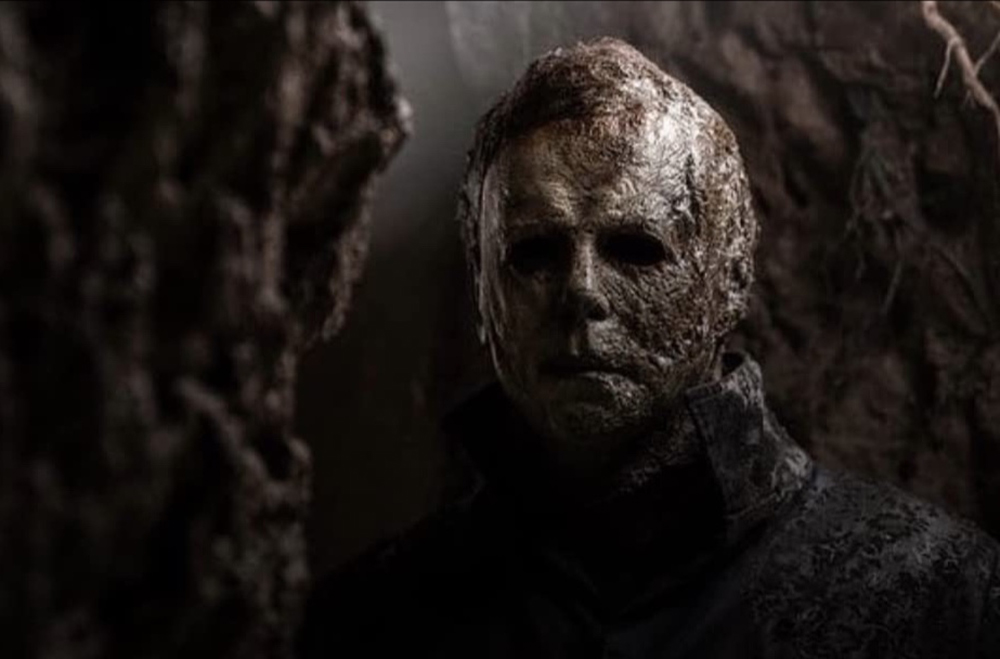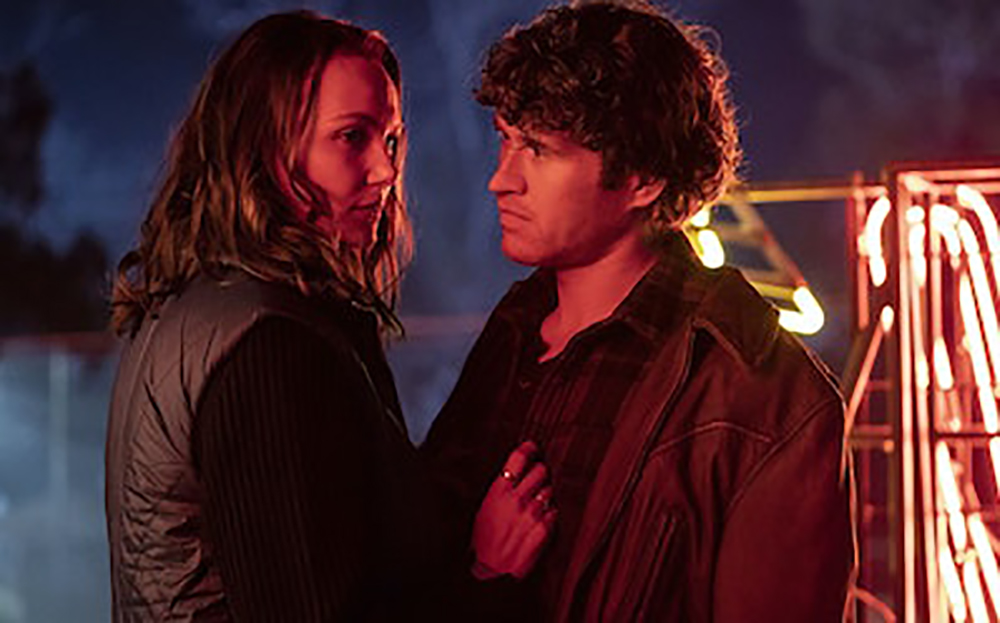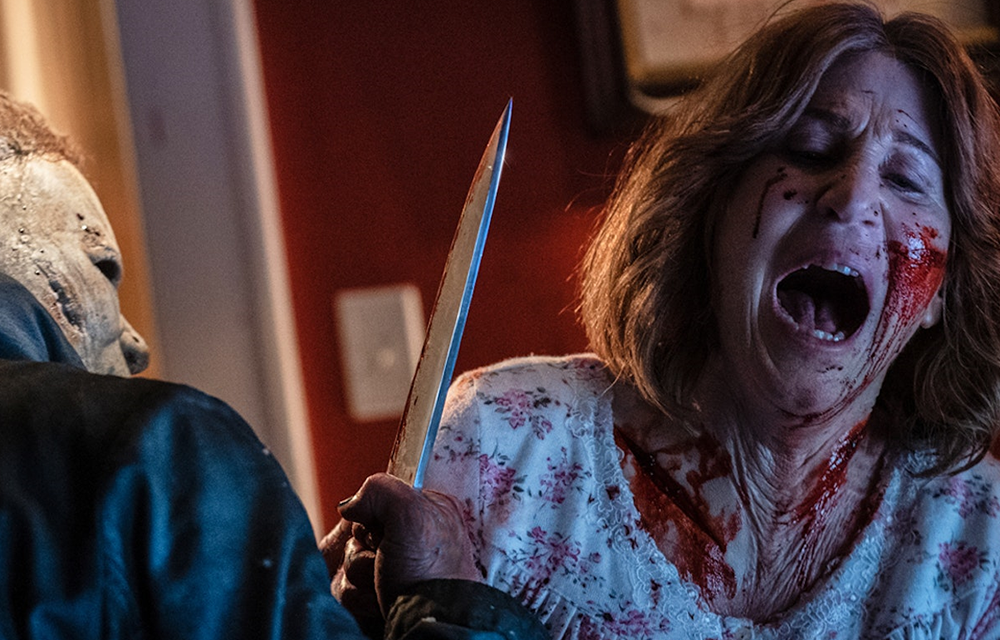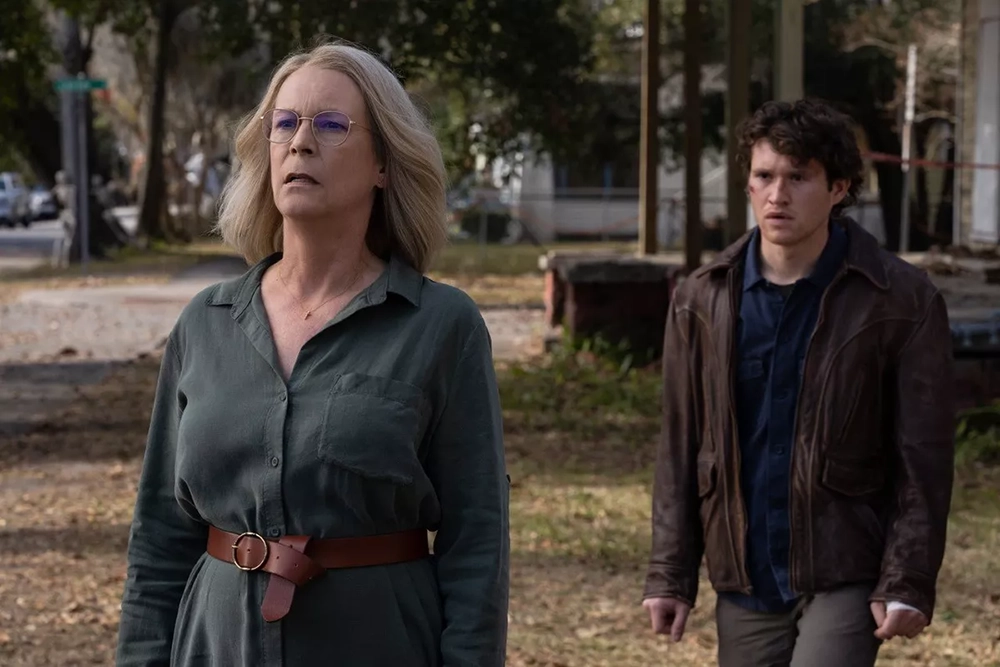“Halloween Ends” is a divisive film. Audiences are splitting into the “I loved it” crowd and the “it’s garbage” side. The first time I watched it, I wasn’t pleased. But if I have learned anything from my “Halloween” time spent with David Gordon Green, it’s to look deeper, and look again.
The first time I watched “Halloween” (2018) I hated it. When I watched it again, a year and a half later, preparing for “Halloween Kills,” I asked myself, what didn’t I like about this? It’s okay. I realized the first time I watched it I went in with a huge expectation. Green is one of my favorite indie directors of all time, and “Halloween” is my favorite horror movie, period. I was expecting too much. Green had his own vision and couldn’t live up to my idea of what I thought “Halloween” should be. I imagine many fans have this same reaction upon seeing “Halloween Ends” (its 39% critic/57% audience on Rotten Tomatoes is further proof of this).
If the purpose of a filmmaker is to make you think, then Green succeeds in that along this franchise. If his first film was creepy (and it honestly improves more upon each viewing) and detailed Laurie’s trauma—and Michaels’s evil—well, his subsequent films became less overt, and more subtle. “Halloween Kills” examined collective trauma, commenting on mob mentality and coming together, with clear Covid pandemic and hive mind themes. Audiences and critics didn’t like that installment either. So, examining “Halloween Ends,” a warning: this movie is even more illusory, even less *about* Michael, and requires more intellectual heft. Michael is in the film for about 10 minutes of screen-time and you could argue this is not a slasher. If that’s enough for you to not see it, you might want to quit reading.
An Intangible Film; Green Abandons the Standard Slasher
But what Green has done here is paint Michael and Laurie’s story into a grander picture of trauma, evil, and lingering ghosts (no, not tangible ones; this is not a film like “Halloween 6” where evil is *controlling* Michael). It’s impossible to review this film without pretty significant spoilers. This is not an “and then this happens, etc.” review. But if you want to be totally in the dark on “Halloween Ends,” watch the film first.
Green is clearly going for an off-the-cuff, if related picture with “Halloween Ends,” present in the first frame, as a loud rock song overlays the opening credits, which this time are colored in blue instead of Halloween orange. We’re introduced to a young man, Corey (Rohan Campbell), who is babysitting last minute for a Haddonfield family a year after the last two film’s events. I won’t spoil verbatim what happens, but an accident while babysitting leads to the family’s young son’s death. Warning: it’s pretty brutal. And no, it doesn’t involve Myers or a knife. It’s ruled an accident, and the events will go on to haunt Corey on repeat.

If the Haddonfield in “Halloween Kills” contained glimmers and sparks of hope, this one has none. It’s a very bleak film; and seeing as Green has relegated Myers to the back-burner, he has a chance to play with his indie film background more than he has previously. Myers has disappeared (into hiding?), but occasionally teens and people go missing. The whole town has become a desperate place (shootings, suicides, etc.). Laurie and Allyson can’t seem to go anywhere or do anything without reminders of Myers’ violence and how they “brought” him upon the town. Green paints lingering aspects of mob mentality, a mentality averse to thinking but not blaming. Corey’s mom (played by Joanne Baron, she’s a quasi villain in her own right) accuses Haddonfield of not letting her son move on after his babysitting accident because they needed a ‘new boogeyman’ after Laurie’s disappeared. She’s probably not wrong.
Is Myers a Curse? Green Thinks So
So Green’s whole narrative hinges on Corey and this feeling that Haddonfield’s a cursed place, where nothing goes right for anyone. The mean-wells present in “Halloween” and “Kills” are here filled with anger and blame. Lots and lots of blame. Corey’s story is bleak and sad. And yes, by the film’s middle, he will become a killer. His connection to Myers is imperfect, and not my favorite part of the narrative. However, I can forgive it for the larger story Green is trying to tell, albeit with murky foundation. A lot of online “Halloween” fans despise his story. They want the kills (there are quite a few kills, though, to be honest). However, what we mostly see is inside a young man who’s changing for the worse. Some fans looked for Corey to *become* Myers. To become Haddonfield’s new boogeyman. I don’t think that is the point of Green’s narrative.
On second viewing, I could appreciate the canvas Green is trying to paint. Intentional or not, Corey’s story is different from Michael’s; Michael was six years old when he stabbed his sister to death, and Corey is 21 when his babysitting accident occurs. Green follows him as his life worsens: he didn’t go to college like he planned. He works for his dad at a dump; he’s labelled the town psycho (in one scene even labelled a ‘pedo’ by a bunch of bullies), and he can’t catch a break. Until he does. He and Allyson (Andi Matichak) connect.

Critics have labeled Campbell’s acting bad (it’s not) and he and Allyson’s time together ‘a love story;’ (it’s also not). What I got out of these scenes was Green being the indie filmmaker he is. He paints a town so engulfed in its own fear and anger that there’s nothing left. Just like an ex-con can’t catch a break, neither can Corey or Allyson. And all along the time, missing person billboards stretch above lonely highways and all sorts of abuse line the film’s proceedings. Green’s Haddonfield has become a canvas; there’s notes of Rob Zombie’s “Halloween 2” in his work, along with “A Nightmare on Elm Street 2,” as well as “All the Real Girls” (Green’s own), and “The Place Beyond the Pines” by filmmaker Derek Cianfrance.
Closure for its Characters; Was ‘Ends’ the Only Way to End the Thing?
On my second viewing, my only real criticism is the fact that we like Corey (or at least I did), and Green is sometimes throwing darts in the air to see what sticks. There’s a clear interpretation that Haddonfield is cursed by evil; that those who live in its confines—since Michael struck in ’78; maybe before?—are doomed to miserable lives, if they are not outrightly engulfed by evil.
However, like Zombie did in his under-appreciated “Halloween,” Green is also painting a pretty solid picture of how abuse, bullying, and neglect can turn well-meaning people into killers. He doesn’t come right out and say either one, which can be a little irritating. Corey is painted as both a victim and a perpetrator, which can be somewhat confusing. One thing is sure though: Corey is not the “new Michael;” I don’t think that is the point of Green’s film in even the slightest. Corey’s kills reek less of pure psychopathy, and more of revenge. This is unlike Myers, who is just killing for the sake of killing.
If this all feels like a rough sketch, it is. “Halloween Ends” is the end of Green’s trilogy, and he paints no hints at a continuation of the story. I feel, in its own off-kilter way, it gives Haddonfield, Laurie, and Allyson the only kind of ending it could. Its closing frames (especially Laurie’s brief confrontation with Myers) feel final. It’s not a happy final. It’s kind of sad, though Green does hint that Haddonfield can move on. Its final ten minutes is kind of exciting. The few characters remaining from “Halloween” (2018)—Laurie, Allyson, Officer Hawkins, et al.—get closure.
Sure to Remain a Divisive Film

So we’re left with the burning question: will fans like it? If you go into “Halloween Ends” expecting Myers, a spotlighted final showdown, or John Carpenter, you will not. I get confused with what horror fans look for these days. Some commenters online thought Corey’s more macabre kills were “awesome.” I almost felt like with some of them, Green was trying to tip some sort of weird hat to Damien Leone’s “Terrifier” (no, the kills aren’t that sick, but they move beyond Michael’s quickly dispatching MO). But me—I thought the whole thing was kind of sad. I don’t know if that’s what we want to take away from a “Halloween” film, but there it is.
So at the end of the day, that’s what we have: David Gordon Green, in his final act, asks audiences to do a great deal of heft and introspection. It’s not a standard slasher, and many people will probably hate it; but it is Green’s film after all, not ours, no matter how much we want it to be in line with our fandom. I think this will continue to be a divisive film, with some loving it and others hating it. I’ve come around more on my second viewing, and maybe you will too. For Green, a man skilled at painting small towns, I can’t think of another ending that gives Haddonfield the story it needs. That in itself may be “Halloween Ends’” ultimate purpose. The imperfect and sometimes messy way Green gets there may say more about our need for tidy and clichéd slashers than anything else.
“Halloween Ends” is available to watch in theaters or stream on Peacock.
Support the Site: Consider becoming a sponsor to unlock exclusive, member-only content and help support The Movie Buff!



2 Comments
I love how you presented the points here. Excellent read as always.
Thanks Paul, appreciate the kind words 🙂